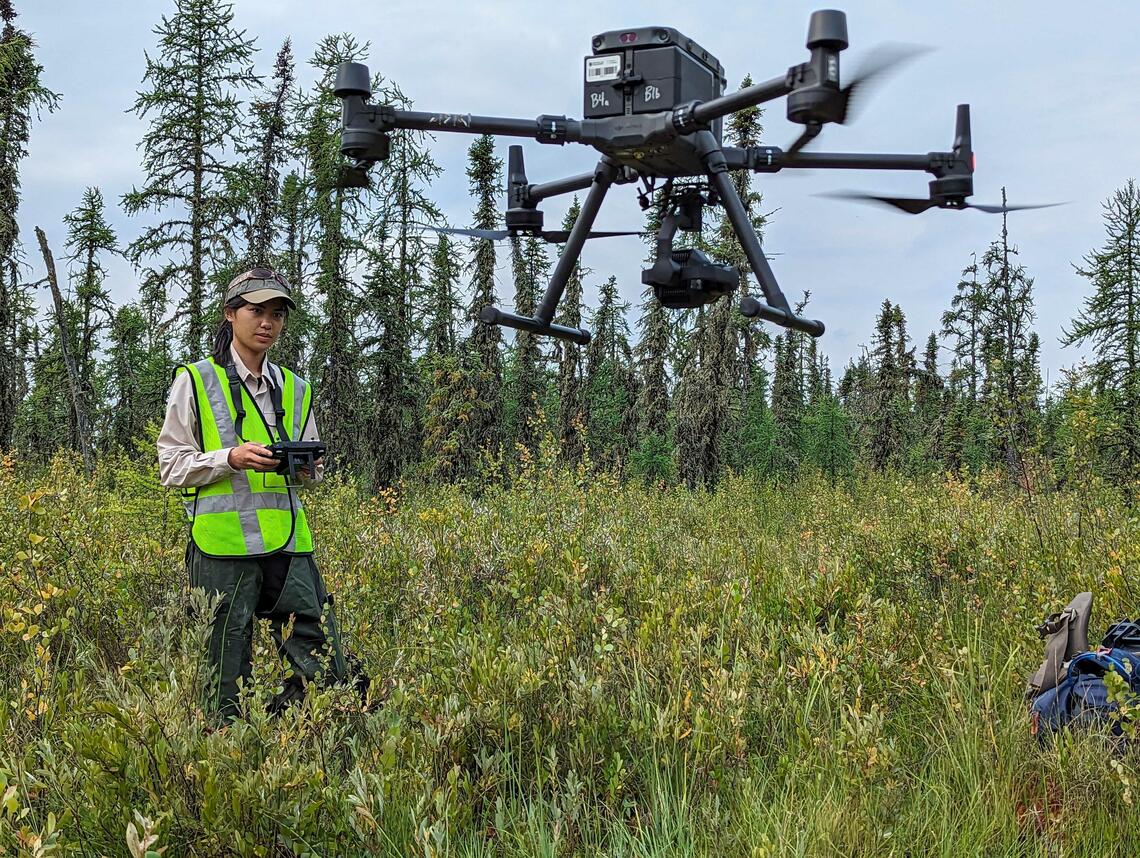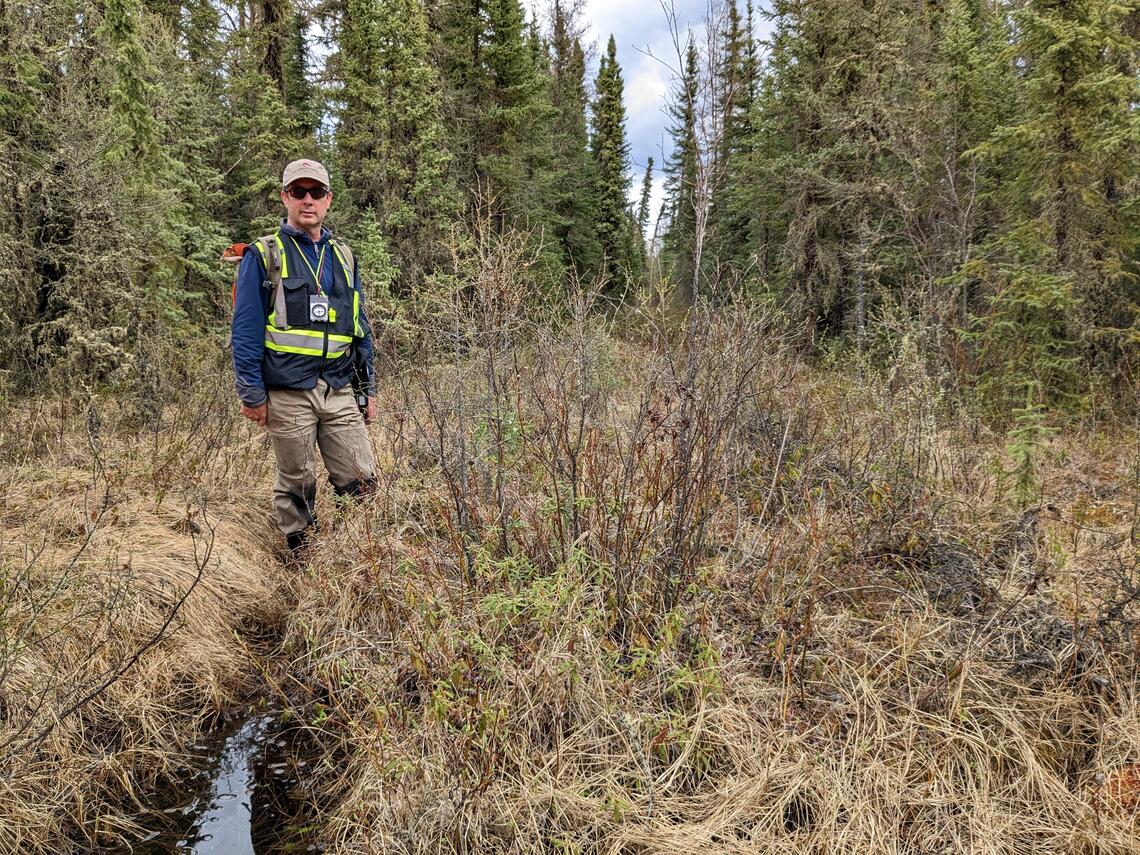Oct. 30, 2023
UCalgary prof in partnership to help reduce boreal forest disruption from oil and gas exploration

A University of Calgary professor is leading the charge to build solutions for industrial disturbances in Alberta’s boreal forest, in particular, seismic lines.
Seismic lines, also known as “cutlines,” are linear disturbances cut through forests for oil and gas exploration. Rich in petroleum, Alberta has around 1.8 million kilometres of seismic lines. Cut through wetlands and forests as long as 50 years ago, these lines were installed with the assumption that the trees and other plants would regenerate quickly once exploration was complete.
But it has since been discovered that this is, unfortunately, not the case. Many seismic lines are successionally stagnated, meaning that they are not growing back naturally. And they have also been connected to wildlife depletion and other environmental concerns.

Xue Yan Chan, a MSc student in geography, uses a drone to measure restoration status of seismic lines.
Irina Terentieva
“Seismic lines have contributed to the decline of woodland caribou, a federally threatened species,” says Dr. Greg McDermid, PhD, a professor of geography with the Faculty of Arts and a UCalgary alum.
“They also have an impact on carbon dynamics. Wet soils in the boreal forest store huge amounts of carbon dating back to the last ice age. Seismic lines can tip the balance on carbon storage in those environments, which is not a great thing. We’re trying to keep that carbon in the ground.”
McDermid leads a team representing industry, academics and government called Boreal Ecosystem Recovery and Assessment (BERA). Together, they are working to restore these common industrial disturbances.
“This is one of Alberta’s grand challenges,” says McDermid. “Our partnership is aimed at solving the puzzle of seismic line restoration. We need to understand the reasons why some seismic lines grow back naturally and others do not, and then learn how to intervene effectively when necessary.”

Greg McDermid stands in a seismic line.
Irina Terentieva
Oil exploration is, of course, also still ongoing, so the team is also working toward finding solutions that would still allow for exploration while reducing disturbance.
But the solution to this is not as simple as just planting more trees, says McDermid, adding regeneration is controlled by many factors. “We find that restoration in some areas can benefit from use of heavy machinery. But this implies a catch-22 of re-disturbing the land again in an effort to fix it.”
In other areas, limiting factors may be different, such as competing vegetation or loss of topsoil. In addition, the sheer volume of seismic lines within Alberta across multiple ecosystems complicates logistics and treatment decisions. So, the solution will not be a one-size-fits-all fix.
For McDermid, the best part for him has been working with the partners in BERA. “It’s very gratifying to see people from industry, government and academics trying to solve the problem together,” he says.
Boreal Ecosystem Recovery and Assessment (BERA) partners with Alberta-Pacific Forest Industries Inc., Canadian Natural Resources Ltd., Cenovus Energy, ConocoPhillips Canada Resources Corp., Imperial Oil Resources Ltd., Canadian Forest Service’s Northern Forestry Centre, Alberta Biodiversity Monitoring Institute, and Alberta Environment and Protected Areas. BERA involves researchers at UCalgary, University of Waterloo, University of Alberta, and Athabasca University.




